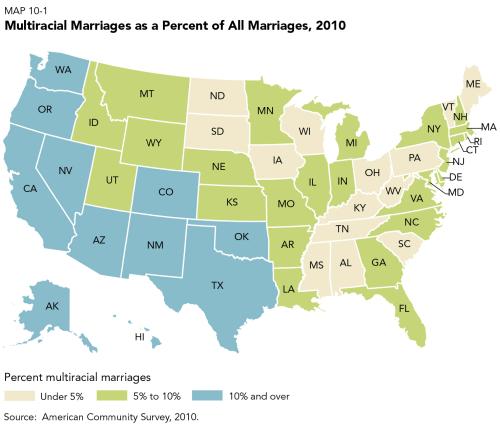Leah Korn contributed to this blog post
Every Valentine’s Day, Americans spend $18 billion on cards, candies, and flowers to express affection for their significant others, children, classmates, and friends. This Valentine’s day, here are some interesting facts about marriage and relationships in the United States.
- Today, only 20 percent of Americans aged 18-29 are getting married.
Down from 60 percent in 1960, only a fifth of American young adults are getting married. Brookings Senior Fellow Richard Reeves suggests this change is due to the rising social status of women, as well as to the loss of low-skilled male jobs. Many of today’s marriages are formed to create an equal partnership focused on the well-being of children. Reeves calls these marriages High Investment Parenting (HIP) marriages. HIP marriages emphasize the importance of raising successful children through a partnership. Reeves notes that Americans are getting married later because they want to ensure they are financially stable before having children. He calls this prioritization system, “money, marriage, maternity.”
- Fifteen percent of newlywed marriages are multiracial.
Brookings Senior Fellow William Frey has found that multiracial marriages are on the rise in the U.S. This is partially due to rising immigration levels. Hispanics and Asians claim the highest levels of interracial marriages. More than four out of ten new Hispanic and Asian marriages in the U.S. are mixed race. Multiracial marriages involving black Americans are least common among the major racial groups. However, Frey notes that three in 10 new black marriages are multiracial. This is very significant given that, until 1967, 16 states still prohibited black-white marriages.
Overall, Frey observes that the millennial generation is getting married and having children later in life and choosing to focus more on higher education and financial stability. Millennials are the most diverse adult population in U.S. history. This has contributed to a clear rise in multiracial marriages of Americans aged 25-34.
Despite the upward mobility and acceptance of the millennial generation, income-level and socioeconomic status of the parents still play a huge role in the success of their children, and the socioeconomic status of that child is a huge determining factor in the likelihood of whether that child will get married in the future.
- The most educated women are the most likely to get married.
Brookings Senior Fellows Richard Reeves and Isabel Sawhill and Senior Research Assistant Eleanor Krause have identified that the most educated women are getting married most frequently in the U.S. They note that a sense of economic independence empowers women to renegotiate the terms of marriage with their partners and create a more equal partnership. Women are now more able to be wives and mothers without sacrificing their own independence.
- Children born in the U.S. to cohabiting parents are twice as likely to see their parents’ relationship end as are children born to married parents.
Laurie DeRose, director of research of the World Family Map Project, and Bradford Wilcox, director of the National Marriage Project at the University of Virginia, note that American children who watch their parents’ relationship end are more likely to act up in school, become pregnant as teenagers, and become delinquent. Almost half of cohabiting but unmarried college-educated mothers will break up with their partner before their child turns 12. Comparatively, less than one-fifth of mothers who were married at the time their child was born will do the same.
This theme is also true in Europe. For example, in France children are around 66 percent more likely to see their parents separate if they are born into a cohabiting, but unmarried, couple. In Norway children born to cohabiting parents are 88 percent more likely to see their parents break up.
- Seventy percent of children with strong parents reach at least a 2.5 GPA, beat teen pregnancy, and avoid criminal convictions.
On the other hand, only 30 percent of children without such parents meet these same benchmarks. Reeves and Senior Research Assistant Kimberly Howard used the HOME Scale (Home Observation Measurement of the Environment) to measure quality of U.S. parenting and found that the income, race, and education of a child’s parents have a large impact on the success of the child. They also found that parents in the bottom income quintile are 18 percentage points more likely to score among the weakest parents than middle-income parents.







Commentary
For Valentine’s Day: 5 facts about love and marriage
February 13, 2018